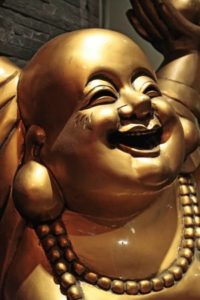In a conversation with a friend who is a long time practitioner of Japanese martial arts I was envious at the structure that was imbued into the different levels of progress. They have very defined levels which are defined by specific curriculum, vocabulary, knowledge, performance expectations, and even visible uniform upgrades. What do the Chinese systems have? (crickets). There are some schools that have tried to implement belt-systems or sashes or name walls but none of this has gotten any traction and often just looks gimmicky rather that standardizing development in tai chi. Instead:
Development in tai chi is based on progressing through five stages. A practitioner begins by memorizing the external moves, learning about and sensing internal development, connecting the external moves with the internal energy, building energy to the level of being able to issue force and express it externally, and increasing awareness so that correct movements, actions, and reactions are automatic.
Anyone who has made tangible progress in the martial arts has learned a set of movements and then made discoveries by working independently.

I am not advocating that the Chinese systems codify their progress here. The Chinese-stylist would defend their structure (or lack of) in the following way: By putting a structure in place or by identifying a single, all-talented teacher, you immediately put a ceiling on your progress. Anyone who has achieved a level of development in tai chi has learned a set of movements and then made discoveries by working independently. This is not an indictment on the Japanese or Korean systems. They have their own lineage of tinkering and making gains. When I cross-train with individuals I find that many have dabbled in multiple martial arts and have landed in their art of choice largely due to availability and personality.
So yes I feel that there are distinct advantages to progressing by being in a non-codified system. However, that doesn’t mean that a new or old person couldn’t benefit from seeing the long road so that they know which direction they are traveling.
In the Chinese systems, the path you are taking is largely due to what you defining.
The beauty of Tai Chi is that it is 1) attractive to people with different interests such as health, martial arts, or history and 2) on the same token allows you to study the same thing for multiple decades as your interests change.

Here is an example: B.K. Frantzis writes prolifically on the use of Tai Chi in martial development. So when asked “What are the stages of learning tai chi?” Here is his answer taken from this EnergyArts.com article.
Stage 1: Form Work (Long or Short Form)
Stage 2: Taichi Pushhands or Tui Shou
Stage 3: Transition Methods between Push Hands and Sparing
Stage 4: Sparing and Actual Sparring
It is decidedly slanted toward martial attainment. It is a very nice article if you are interested in a full explanation of each stage.
Five Levels of Development in Tai Chi
Learning taijiquan is in principle similar to educating oneself; progressing from primary to university level, where one gradually gathers more and more knowledge. Without the foundation from primary and secondary education, one will not be able to follow the courses at university level. Chen Xiao Wang

There is a tangible sequence to understand and truly follow to make progress in Tai Chi. Five levels have been laid out for us that can be applied to any finite or global pursuit. This means that B.K. Frantzis’s explanation above incorporates these ideas and that we can take these ideas and apply them to our own interests. I will use an article translated for Chen Xiao Wang (CXW) and boil the principles down. Understand that micro-actions, even two minutes of practice or standing each day, bring profound understanding of progress. Just thinking about this intellectually can only get you so far.
The First Level: Requirements on the different parts of the body
The purpose: allows one’s energy to sink to the dantian
This level is super easy to understand and to execute. CXW estimates that these basics can be achieved in 6 months. For the novice this is encouragement to work steadily and for the avid practitioner this is motivation to reinvest some time in some weak points and get on our way. Here is your job:
Level One Tips for Tai Chi Development
- keeping a straight body
- keeping the head and neck erect with mindfulness
- relaxing the shoulders and sinking the elbows
- relaxing the chest and waist letting them sink down
- relaxing the crotch and bending the knees
- breathe naturally
Here is a breath of fresh air: CXW says that a beginner at this level can be: “…not well coordinated and systematic…postures may not be correct…the force or jin produced may be stiff, broken, lax or on the other hand too strong.” Sounds great! Let’s get the form down, let’s allow ourselves to stink at what we think is important because it is not yet important. This idea was also confirmed by surveying longtime practitioners during a recent workshop.
What Level 1 taught me: Real life terms.
I never want these essays to be solely theoretical so let me share how taichi has positively affected my life. At work I was super behind. I had 7 products partially started and none were complete. Psychologically I was beating myself up for not being done, them being imperfect. What did I do? I hammered through all 7 in 10 days, during working hours. How different do you think my completed version was from a perfect version? My boss was ecstatic and I was able to pass them off to colleagues to inject new motivation and put on the final touches. 4 months of cowering put to rest in 10 days!
The Second Level: Feel the movement of internal energy
The purpose: to ensure that the internal energy/qi will move systematically in the body in accordance with the requirements of each movement.
Ok, deep breath. You started this tai chi thing to feel this internal energy. Oh but it is illusive. Oh but I can’t feel it. Bull. Chances are you couldn’t sense it because you weren’t aligned or attune. You just took care of that by learning the form. You can only concentrate on specific movements because you are not overwhelmed by remembering the choreography.
At this level trust that things are flowing and that by making small improvements to the form you will increase the energy to the level that you can sense it. Here is your job:
Level Two Tips for Tai Chi Development
- external closing/union of movement: closing of hands with legs, elbows with knees, shoulders with hips
- relaxing shoulders and elbows, chest and waist as well as crotch and knees
- use the waist as a pivot to move every part of the body
- breathe naturally
What Level 2 taught me: Real life terms.
I had been studying guitar for a while and could “play” a couple songs. It is merely for fun and am not about to quit my day job so I hadn’t thought about refining a song past just learning the notes. Then my teacher asked if I wanted to play at a Student Showcase Performance. I agreed, the fear kicked in, and holy cow was I focused on improving the song I already knew. I had a blast bringing the song up to performance level, played in front of a completely sympathetic crowd, and for the first time had someone say “Oh you play the guitar?” And for the first time I answered “yes.” When I was fear-stricken on stage my body was acting before my mind (which was frozen) could. “Oh you study tai chi?” Focus on improvements and answer them “yes.”
The Third Level: Mastering the internal and external requirements
Purpose: improve the strength of internal qi and begin the coordination between muscle movements and the functioning of the internal organs
Level Three Tips for Tai Chi Development
Here is your job:
- synchronize actions with breathing quite precisely
- be able to command the actions with more ease, not muscle
- practice push-hands and weapons as an out-of-the-box experiment to practice your balance, posture, and force
- check on the quality and quantity of the internal force. Is their visible blood flow to your hands? Can you break into a sweat from standing meditation? Can you feel heat in your palms? If not, seek specific corrections on standing and qi gong.
What Level 3 taught me: Real life terms.
Much of the focus of the third level has to do with dissolving conflict. There is a third way that I have benefitted from my tai chi development and it has been to simply learn how not to respond. So many times at work or with the kids, someone is in a bad mood or is acting clearly out of their own motivations. I always contemplated my response as being for or against them or a choice between appeasing them or aggravating them further. But what about doing nothing? By putting some time between me and worker who “needed to talk” or a child that “needed” something, by the time I approached them on the subject they were completely confused because they had forgotten all about it, had moved on, or were embarrassed. This all comes down to adaptation in sometimes stressful circumstances and tai chi can give you that.
The Fourth Level: Expressing force
Purpose: exerting the right force, adjusting internally, predicting the opponent’s intention, subduing one’s own actions, and expressing precise force and hitting the target accurately.
Level Four Tips for Tai Chi Development
Here is your job:
- practice each movement as though you were confronting the opponent
- each part of the body must move in a linked and continuous manner so that the whole body moves in unison.
- Movements of the upper and lower body are related
- there should be a continuous flow between movements
What Level 4 taught me: Real life terms.
Force does not come from the buildup of strength or clout. Each year my profession attends a conference and has a booth with varying degrees of success. This last year was the most successful. It was not because of the products we were selling or because of who was attending. We worked hard to strip away everything that was non-essential and therefore had extremely positive engaging employees attend who focused on three applicable products. It was a success because we aligned our force to have the greatest impact and left the conference feeling elated rather than exhausted.
The Fifth level: Coordination and special relationships
Purpose: work hard day by day until the body is very flexible and adaptable to multi-faceted changes
The beauty of the fifth level is that it is very real to life. We can never be sure of what will be thrown at us. To conclude with the Japanese-Chinese metaphor that began this essay: Tai chi is more about focusing on abilities that would hold up against the majority of attacks (internal strength, groundedness, awareness, posture) rather than practicing against precise attacks (punch with your right hand).
Level Five Tips for Tai Chi Development
Here is your job:
- the form should be relaxed, dynamic, springy and lively.
- every move and every motionless instant is in accordance with taiji principle
- every part of the body should be very sensitive and quick to react
- there should also be constant interchange between expressing and conserving of force
- the stance should be firm as though supported from all sides
Summary:
As you can see, development in tai chi is a natural progress from external to internal or from hard to soft. That being said, we need to know that we cannot beat ourselves up along the way for being too external or hard. That is the point. Being too external or forceful and not considering the other point of view might have led us to study tai chi. Don’t worry! You are not alone. We did a survey to find out why people study tai chi and everyone is seeking to make one improvement or another.



Great! Thank you very much